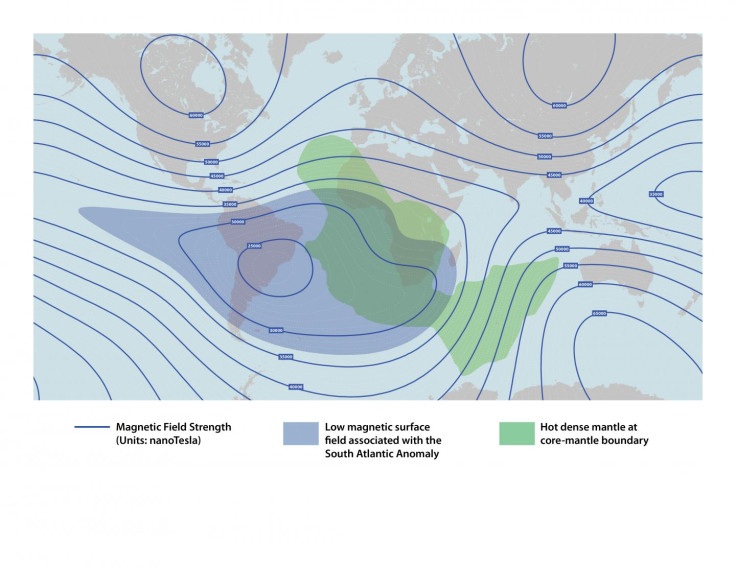Ancient ritualistic burnings in Iron Age South Africa shed light on Earth's magnetic field reversal

A record of Earth's magnetic field has been recovered from ancient ritualistic village burnings in an Iron Age settlement in southern Africa.
A team of scientists led by University of Rochester geophysicist John Tarduno were able to recover the magnetic field record from between 1,000 and 1,500 AD by analysing burnt remains from a village. At this time, the agricultural communities would ritualistically cleanse villages by burning down huts and grain bins.
Published in Nature Communications, the team collected data from five sites along South Africa's boarder with Zimbabwe and Botswana – an area that has an unusually weak magnetic field strength, known as the South Atlantic Anomaly.
Earth's magnetic fields reverse irregularly and the last one took place about 800,000 years ago. After the reversal starts, it can take up to 15,000 years to completely shift.
At present, Earth's magnetic field is weakening, decreasing about 16% since 1940. Most of the decay is related to the weakening field in the South Atlantic Anomaly, leading many to speculate the planet is currently in the early stages of a reversal.
Instead, the data from the ancient Iron Age settlement suggests the core region beneath southern Africa could play a significant role in the Earth's magnetic reversals and may be the birthplace of some of the recent and future pole reversals.

Researchers say the region affects the direction the liquid iron that generates Earth's magnetic field is churned. This flow shift causes irregularities that lead to loss in magnetic intensity and gives the region its low magnetic field strength, Tarduno said.
Until now scientists had relied on estimates from models using data from other global sites. However, in the ancient villages the burnt clay floors had reached temperatures exceeding 1000C – hot enough to erase old magnetic information and create a new record of the magnetic field strength and its direction at time of burning.
Analysis of the remains showed a 30% drop in magnetic field intensity between 1225 and 1550AD. This suggests that changes in its behaviour might be a recurring feature of the area.
Shifts in the fluid direction might result in a magnetic flux that causes rapidly changing magnetic field intensities and directions – they are not necessarily a sign that we are in the early stages of a magnetic field reversal.
Tarduno noted, however, that it could be a repeating feature that occasionally leads to a field reversal. "It has long been thought reversals start at random locations, but our study suggests this may not be the case," he said.
Embargo 4pm
© Copyright IBTimes 2025. All rights reserved.






















